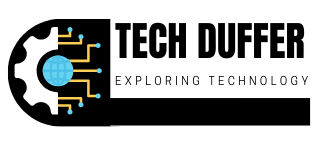Introduction:
The infusion of information technology into residential settings is reshaping how we manage and interact with our living spaces. This article examines various examples of information technology at home, demonstrating its impact on everyday life through enhanced convenience, security, and sustainability.
Key Examples of Information Technology in Homes:
- Smart Home Assistants: Devices like Amazon Echo and Google Home represent prime examples of information technology in our homes. These smart assistants respond to voice commands, perform tasks like setting reminders, controlling smart appliances, and even assisting with online shopping—all through simple voice interactions.
- Home Automation Systems: Home automation technology integrates various household functions—lighting, heating, air conditioning, and security systems—into a single, cohesive unit. Users can automate processes like adjusting the thermostat or setting security alarms through user-friendly interfaces on their smartphones or tablets.
- Energy Management: Smart thermostats and smart lighting systems use information technology to optimize energy consumption. Devices like the Nest thermostat learn a household’s patterns and adjust heating and cooling to maximize comfort while minimizing energy use. Similarly, smart lights can adjust brightness based on the time of day or occupancy, significantly reducing unnecessary energy expenditure.
- Security Enhancements: Information technology has significantly advanced home security. Modern security systems integrate cameras, motion sensors, and automatic locks that can be monitored and controlled remotely. This integration allows homeowners to keep an eye on their properties from anywhere in the world, providing peace of mind.
- Entertainment and Connectivity: The rise of streaming devices and connected entertainment systems like Chromecast, Roku, and Apple TV has transformed in-home entertainment. These devices allow users to stream content from the internet directly to their televisions, offering a seamless integration of various streaming services.
Benefits of Information Technology in Homes:
- Convenience: Automated home systems simplify daily tasks.
- Security: Enhanced monitoring and real-time alerts provide increased security.
- Efficiency: Smart devices minimize energy usage, reducing costs and environmental impact.
- Accessibility: Technology makes homes more accessible for individuals with disabilities, providing voice-activated controls and other assistive features.
Challenges and Considerations:
While the integration of information technology in homes offers numerous benefits, it also presents challenges such as privacy concerns, the complexity of technology, and the need for ongoing maintenance and updates. Addressing these challenges is crucial for maximizing the benefits of smart home technologies.
Conclusion:
The examples of information technology at home are indicative of a larger trend towards more connected, responsive, and efficient living environments. As technology continues to evolve, the potential for further integration into home life is vast, promising even more innovative ways to enhance the functionality and comfort of our living spaces.
Final Thoughts:
Embracing information technology at home means not just adopting new gadgets but rethinking how our living spaces can serve us better. As we look to the future, the smart home stands as a beacon of potential, driving forward our understanding of comfort, efficiency, and security.

